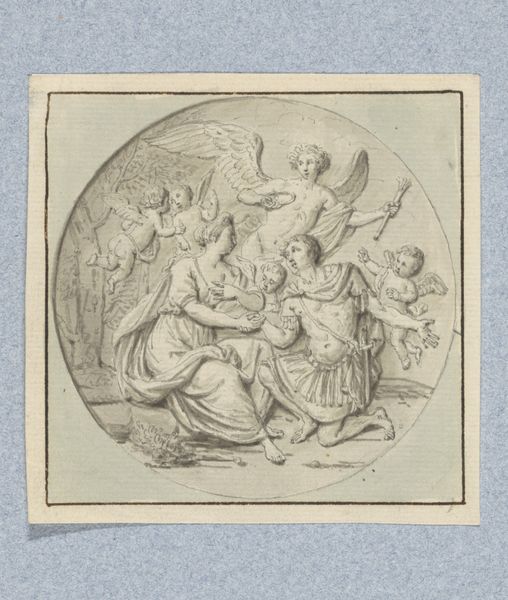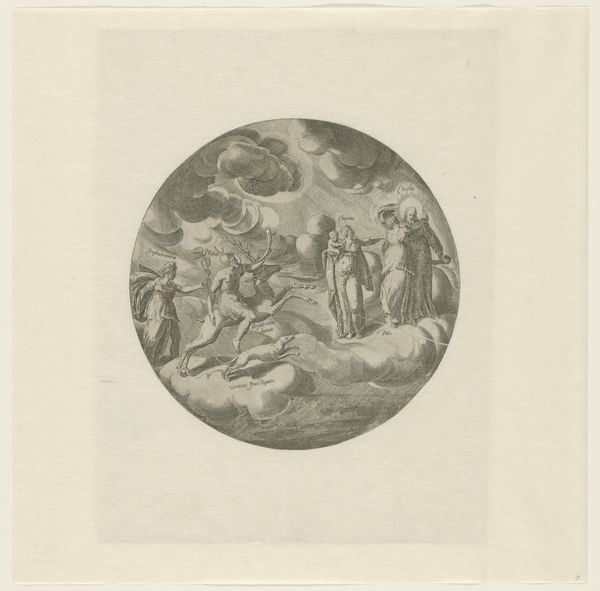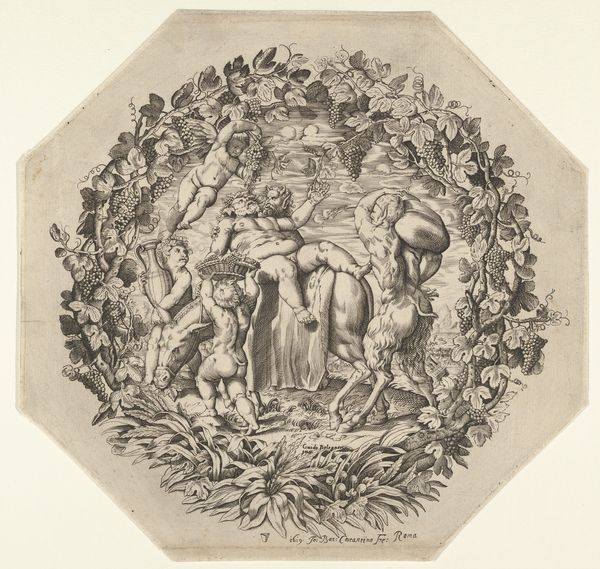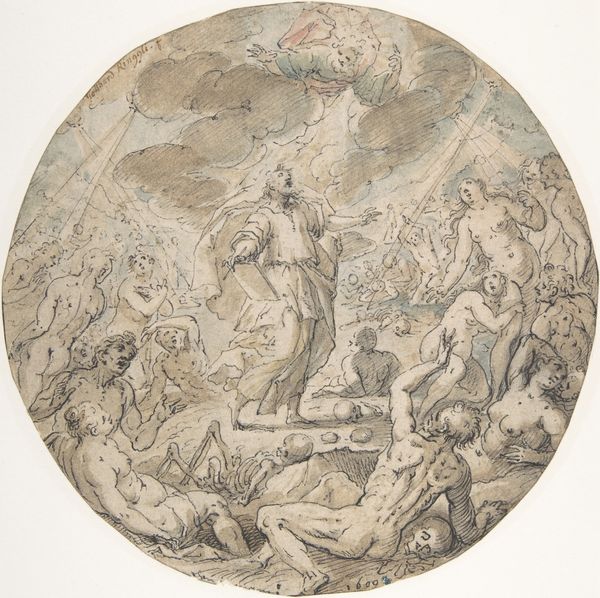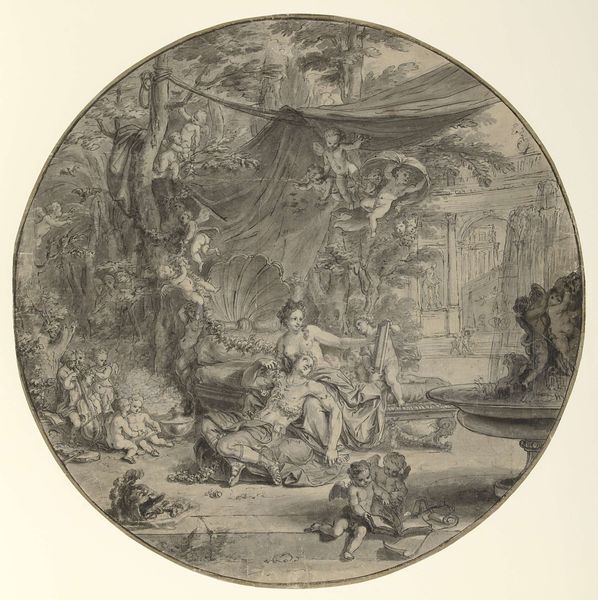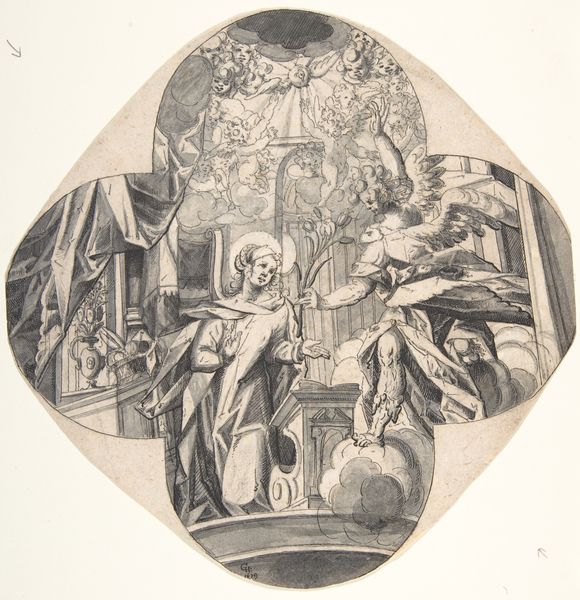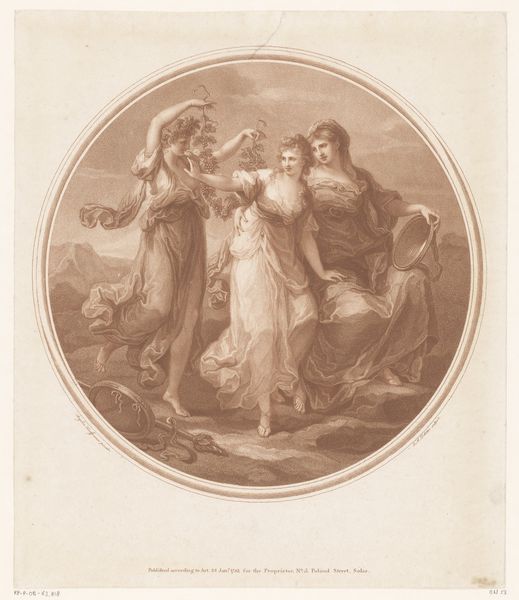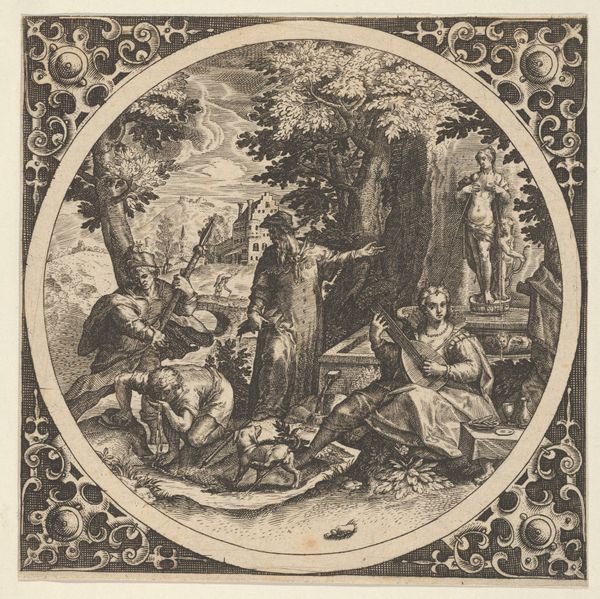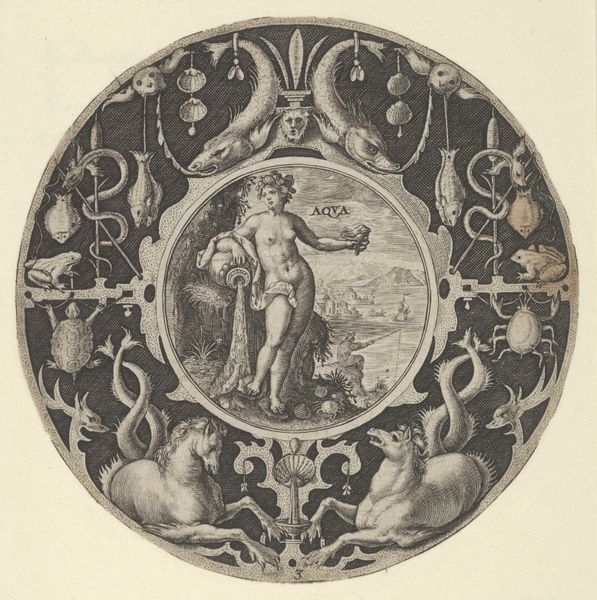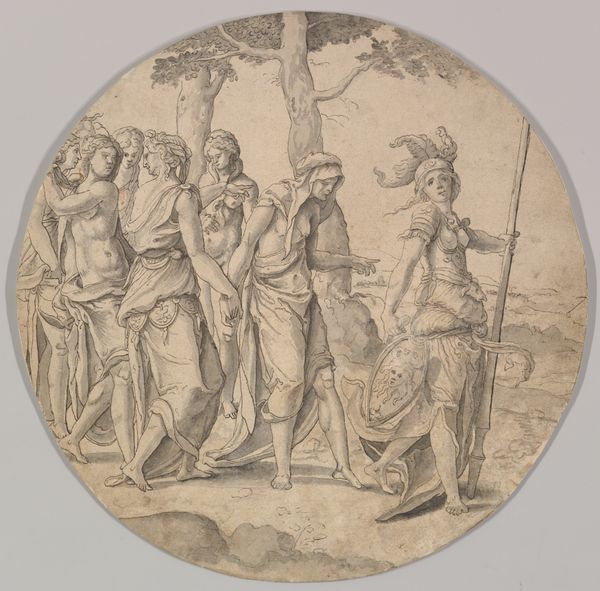
drawing, paper, ink
#
drawing
#
toned paper
#
pencil sketch
#
charcoal drawing
#
figuration
#
paper
#
11_renaissance
#
charcoal art
#
ink
#
pencil drawing
#
history-painting
Copyright: Public Domain
Curator: Well, I must say, it has a rather theatrical feel about it. Look at the expressive faces. It feels very posed, almost staged. Editor: Indeed! We're looking at Adam Grimmer's "Baptism of Christ," created in 1584. This drawing, rendered with ink, pencil, and charcoal on toned paper, resides in the Städel Museum. Note how Grimmer encapsulates this momentous occasion within a circular format. Curator: A tondo, you mean? Right, the Renaissance loved a good circle! But stepping back, it’s so busy, almost overwrought. There is Christ, obviously being baptized, yet to the right, it feels like a gathering of ominous onlookers! Editor: Ah, but the "onlookers," as you call them, contribute crucially to the drawing’s complex semiotic structure. The serpent coiled beneath them, for example, directly embodies temptation. Curator: I see what you mean about the temptation, although with those grimacing faces I'd say its one he turned away from. I’m much more drawn, literally and figuratively, to the delicate linework suggesting the heavens opening up—it does create a strong contrast with the darker figures below. What is it that really strikes you? Editor: Formally, the layered composition invites analysis: The dove represents divine grace that intercedes through strong verticals balanced horizontally. Curator: I find myself questioning the real impact on someone encountering it for the first time. It almost requires this kind of unpacking. Editor: And does this 'unpacking', as you call it, diminish the drawing’s effect? Or does it enhance our ability to approach, question, and interpret it in light of its artistic intention? Curator: I still can't quite warm to the darker areas and figures to the right, though I get what they represent. In fact, if they weren’t there at all, the rest of the scene might shine even more radiantly with hope and promise, for me personally at least. Editor: So, your response veers more toward the expressive interpretation of the scene... Curator: I suppose so, even if it's flawed, for I now see how a modern person's immediate sense can indeed benefit greatly when brought face to face with the intent, skill, and meaning embedded within an artwork!
Comments
No comments
Be the first to comment and join the conversation on the ultimate creative platform.
